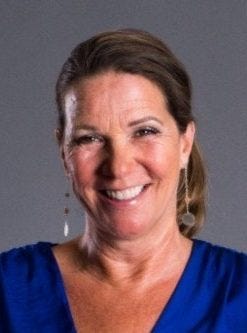The channel is making more money than ever, but is it building a house of cards?

All sides of the channel need to recommit themselves to the end user experience.
So say a group of channel veterans who are calling for a reformation in the industry. Hilary Gadda, director of national channel development at TPx, will moderate a discussion at the Channel Partners Conference & Expo (April 11-14) about how suppliers, technology solutions brokerages (TSBs) and agents can offer end users a more holistic and better supported experience. It also touches on some of the missteps they believe these companies are making as the channel gets more and more outside attention and investment.
The panel, titled “Have We Forgotten About the Customer?”, will feature Peter Radizeski, telecom and cloud consultant at Rad-Info; Dany Bouchedid, founder and CEO of Colotraq; Scott Levy, founder and CEO of Bridlewood Consulting; and Jeff Ponts, founder and executive vice president of Datatel Solutions.
They’ll be speaking on Tuesday, April 12, at 11:20 a.m.

TPx Communications’ Hilary Gadda
Some of the panelists shared their thoughts about where they see the industry moving.
Channel Futures: Your session contends that channel organizations have lost sight of the end-user experience. What do you mean by this?
Dany Bouchedid: When I first got involved in the channel 20-plus years ago, there was a predominant emphasis on the end-user or client experience at every level starting from the supplier, [technology solutions brokerage] and agent. There was a focus on education and training and certifications so as to justify the existence of a channel in the eyes of the customer. That was the biggest challenge at the time, as agents were essentially competing with the direct sales forces of the vendors as well as various other alternative or substitute methods of sourcing these products and services. The competitive positioning and value prop focused on why a customer should use an indirect channel partner to source these services as opposed to going direct to the vendors.
These channel insiders are among more than 100 top speakers at the Channel Partners Conference & Expo/MSP Summit. Register now to join 6,500 fellow attendees, April 11-14. You can also interact with more than 300 key suppliers and technology service distributors. |

Colotraq’s Dany Bouchedid
Even the TSBs focused much of their marketing and operational budgets on providing the necessary infrastructure for agents to impress their clients with their knowledge and expertise in a particular product/service segment. The vast majority of deals in the channel would have the customer be one no more than two layers away from the vendor — meaning, if the deal was registered by a TSB with a vendor, at most there would be one subagent and then the actual end user or customer.
Fast-forward to today, as the industry consolidates at a torrid pace, and as the subagents over the years added subagents under them and so on, under those subagents we are seeing an increasing number of deals in the channel where the end user is four to five layers removed from the vendor. Talk about having the proverbial “too may cooks in the kitchen.”
Scott Levy: As an independent agent, I agree with all the points that Dany made. As for my two cents, I add the following: If there is no customer, there is no need for the channel. The channel has lost focus of whom the customer is, what they are looking for and how the business of telecommunications within the business operates. The channel for years was all about the local independent agent and their SMB clients. Fast-forward to now and there are those of us with clients spending multi-hundreds of thousands of dollars a month to over $1 million a month. The offerings and the attention to detail has to change. In midsize accounts, enterprise, Fortune 1000. Forbes 200, etc., the channel has to change [its] approach and attention to detail considerably. Most say they can or will, but the reality is they cannot.

Bridlewood Consulting’s Scott Levy
Peter Radizeski: The private equity infusion of $650 million into the broker space is about the brokers and the partners. The customer isn’t a factor. The M&A in the vendor space that has been rampant for the last six years has created a bunch of dysfunction that actually makes it hard to service the customer. The transformation of the old CLEC-type providers has added new challenges. To an extent, some providers are trying to guess where the puck is going and have products for that, but that isn’t what the partners are selling. Product pushing wasn’t the answer to anything businesses needed during the pandemic. They had pain and needed solutions, not product. And they don’t really need 55 providers selling the same thing in the same way. It looks like it is all about short-term revenue.
CF: How do the different sides of the value chain – supplier, TSB and agent – play into this trend? Have all of them forgotten about the customer, or is one group in particular driving it?
PR: In many ways, no one cares for the customer as much as they care for the revenue, sale, win, new logo. Something to put on a slide for investors.

Rad-Info’s Peter Radizeski
There are so many disconnects. AT&T having a sales team calling everyone about fiber broadband, including customers that are on a contracted fiber ADI circuit with them. Talking to a UCaaS account executive about CCaaS functions for the customer, but CCaaS is another department. Switches being decommissioned without any plan for the customers on that switch. Vendors lying about FCC mandates to push their POTS replacement product. Where in any of this is the customer?
DB: While I believe the TSBs are driving this trend, every company in the value chain from the vendors to the agents are playing into it. The TSBs are fueled by PE pressure to scale faster than their competitors and are more concerned with dazzling and impressing agents to join their organization (whether to simply use them or to be acquired by them) with parties, events, clothing, paying their cars off, and literally paying them to run their deals through them. The vast majority of MDF and operational budgets are focused on such activities, and the proof is …
… in the social media posts abound in the channel.
What customer wants to see that the agency they are using is being wined and dined left and right and taken to concerts and sporting events? Post after post with the agent’s TSB sponsored by this vendor and that vendor doesn’t give the customer a feeling that the agency they are using is truly customer-centric and, most importantly, vendor-agnostic. Those phrases that were the pillars of the channel in the formative years have all but disappeared. Now the name of the game is which TSB or vendor throws the most money at an agent is what gets them the business.
No more are the days of designing solutions from the vendors that made the most sense for the customer’s business needs. Is that what would make that agent a “trusted adviser” in the eyes of the customer? Has anyone bothered to ask customers what they think of these trends in the channel?
CF: What’s one change or shift you’d like to see take place in the channel that will help put it back on track?
DB: Beyond the fact that this is not adding any value to the customer’s sourcing and procurement process, it’s actually creating gross inefficiencies and bottlenecks. It’s becoming one giant MLM scheme. And you know who ultimately loses if the customer starts to perceive our industry that way? The entire channel industry as a whole. This is why a few of us industry veterans are so alarmed by these trends and are speaking out to hopefully bring awareness to the pitfalls of where we are heading. Hopefully we can inspire enough companies in the channel to effect change and bring everyone’s focus to what truly matters the most: the customer.
PR: I don’t think anything can stop the shift right now. Too much money flowing in the channel and the vendors. All of it has to be paid back with interest.
SL: I personally don’t care about the party, the ball game, golf, etc. What advantage does that provide my client? Does it get them better service, billing, response? Do the channel providers really honestly believe persuasion to do business with their firm is predicated on the size of spiff or party or golf? Those that would sign to bring business based on those things, I can’t imagine ever bring business of size or longevity. How damn shallow you must be to let SPIFF size or parties influence the decision to do business. My single and sole decision to do business with your firm is predicated on you being there when I need you. You as the vendor being willing to step into the ring with me — what you do when it breaks.
I don’t care when you tell me you have the next best thing. I don’t care when you say you have the best service, best response time, best economy of scale, or any of the other “used car salesman” smoke. Bottom line: Each and every one of those statements gets debunked at some point. End users don’t worry if things are running well; they do however care that you and your company are there when something breaks.
This session to me is really a call to duty, or a firm reminder that the channel is losing sight of what made it successful in the first place. The end user, be it small in the beginning, needed or wanted that local agent to be their sounding board, their eyes and ears. Protect me from the big AT&Ts, Sprints and Verizons of the world. That agent relationship was founded on trust with a familiar face in your city or town. I have a hard time finding things in the channel that resemble that today.
Want to contact the author directly about this story? Have ideas for a follow-up article? Email James Anderson or connect with him on LinkedIn. |
About the Author(s)
You May Also Like


